After giving the Malaysia media a preview in April, Bermaz Motor Trading is now introducing the new Mazda MX-30 to the Malaysian public. The model, Mazda’s first battery-electric vehicle (BEV), is priced from RM198,780 and bookings are accepted at the Mazda Flagship showroom in Glenmarie, Selangor.
The development of the MX-30 is part of the company’s Sustainable Zoom-Zoom 2030 vision of achieving carbon neutrality. The carmaker has also taken a different approach with performance (acceleration, top speed, range) not being the main focus but practicality and urban usage. This approach has helped to manage the costs which are still high for BEVs. (more…)
The CX-8 joined the Mazda range offered by Bermaz Motor in 2019 and like the CX-5 below it and the CX-9 above, it found its own niche in the competitive SUV segment. With 3 rows, it provided the extra seating space which was required by some customers that the CX-5 could not offer. And being assembled locally at the Inokom plant in Kedah, it could be priced competitively.
Today, the updated CX-8 made its debut with the usual enhancements that products in the middle of their generation received. The overall design with KODO: Soul of Motion philosophy is retained but the front grille has been revised a bit to present a strong, mature and dignified presence. LED headlamps are also fitted and give a visual signature.
The 3-row cabin retains all the comfort and convenience features with the more premium features now becoming standard. These include the 7-inch instrument panel display, 6-way power seat for front passenger, handsfree power tailgate and auto-folding mirrors, along with additional USB ports for the passengers in the third row. There are also LED interior lamps as well as a wireless charger and wireless Apple Carplay which is accessible through the 8-inch Mazda Connect Infotainment display.
The CX-8 Mid and High variants get updated leather upholstery for the seats in black, while the 2.5L High Plus variants retain the Nappa leather in Deep Red. For added comfort, the front seats have an internal ventilation as well as heating functions.
Customers can choose from 5 variants, three of which have the SKYACTIV-G 2.5-litre 4-cylinder petrol engine (192 ps/258 Nm) and one with a 2.2-litre 4-cylinder turbodiesel engine( ps/Nm). A powerful new engine is also offered in one variant and this is the turbocharged version of the SKYACTIV-G 2.5 which produces 228 ps/420 Nm. All variants are paired with the efficient SKYACTIV-DRIVE 6-speed torque converter automatic transmission with manual shift mode.
The drivetrains are front-wheel drive but there is now a new variant with All-Wheel drive (AWD) as well and only this variant has the turbocharged engine. At the same time, the turbodiesel variant which used to have AWD is now 2WD. Mazda’s AWD system is advanced and intelligent to allocate power to specific wheels to improve stability and grip on slippery surfaces. However, all variants of the CX-8 also have G-Vectoring Control Plus (GVC Plus) and this too controls and stabilises vehicle behaviour at high speed when cornering. GVC Plus uses braking force on the outside wheels to counteract undesirable vehicle movement.
Mazda’s i-Activsense integrated safety suite has been updated and drivers can now enjoy safer motoring with the newly added Adaptive Front-lighting System, High Beam Control, front and rear Smart Brake Support, and Mazda Radar Cruise Control with stop/go (meaning the system operates down to standstill).
Colour choices for the 2022 CX-8 are Soul Red Crystal, Machine Gray, Snowflake White Pearl, Deep Crystal Blue, Jet Black and Platinum Quartz and Polymetal Gray, the last two being new additions.
Mazda vehicles distributed by Bermaz Motor come with a 5-year manufacturer warranty or maximum of 100,000 kms after original registration. Additionally, owners get 5 years of free scheduled maintenance (except for the BT-50), inclusive of labour, parts and lubricants. Both Manufacturer Warranty and Free Maintenance have a coverage period of five years and a mileage limit of 100,000km, whichever comes first.
To know more about the new CX-8 range and other Mazda models, or to locate an authorised showroom in Malaysia, visit www.mazda.com.my.
How Bose has been developing premium sound for Mazdas over 30 years

Since 2006, the Black Series High-Performance Cars from Mercedes-AMG have never failed to impress. From the puristic SLK 55 AMG Black Series to the latest GT Black Series, the exclusive range from the specialists at the carmaker’s high-performance subsidiary has been synonymous with a very special type of car.
The GT Black Series launched by Mercedes-Benz Malaysia today continues with uncompromisingly sporty and expressive design, with the most consistent technology transfer from motorsport to a production car. It is designed for the racetrack but is road-legal too.
Improved V8 biturbo engine
The AMG GT Black Series represents a new highlight in this approach. It is the most powerful Mercedes-AMG with a 4-litre V8 biturbo engine, adaptable to special conditions of various racetracks. Further development puts significantly more power (730 ps) than the previous flagship model of the AMG GT family, with even more agile throttle response, thanks to maximum torque of 800 Nm.
What does this improved engine do for performance? It enables the sportscar to go from standing still to 100 km/h in a claimed 3.2 seconds, crossing 200 km/h in less than 9 seconds, and on to a top speed of 325 km/h (only on racetracks). The superlative performance level is not only reflects in the power delivery but also with a distinctive soundtrack.
Power goes to the rear wheels through a 7-speed AMG SPEEDSHIFT DCT 7G dual-clutch transmission. The unit is located on the rear axle in a transaxle arrangement for optimal weight distribution, as is the case for all AMG GT models. It has been modified for use in the AMG GT Black Series and adapted to the increased torque of 800 Nm.
The Race Start function is now even more impressive, thanks to the increased starting revs, the more sensitive wheel slip control and the sports tyres fit for the racetrack. Furthermore, the transmission cooling has been adapted to the tougher requirements, and the transmission ratios have also been slightly modified.
Sophisticated aerodynamics
The sophisticated aerodynamics make a significant contribution to high driving dynamics and stability on fast circuits. As with the AMG GT R and AMG GT R PRO, aerodynamics experts and designers have worked closely and the similarity to the AMG GT3 and AMG GT4 racing cars is visually and technically stronger than ever before.
At the rear is the new apron with a large diffuser, two rounded twin tailpipe trims on the outside left and right, side wheel arch ventilation, and the innovative rear aerofoil concept. Both aerofoil blades are made from carbonfibre, can be mechanically adjusted and therefore adapted to various track conditions. The second, lower positioned blade was made particularly small and narrow because this is ideal for the air arriving from the front of the car.
The detailed aerodynamic work also includes the now almost fully panelled underbody. This area must not only meet aerodynamic requirements but also thermal ones (for heat dissipation). The flat underbody is equipped with specially designed longitudinal fins. These air channellers have been meticulously optimised to ensure optimal airflow to the rear diffuser. The entire package accelerates air flow, significantly increasing downforce up to well over 400 kgs at 250 km/h.
The lightweight carbonfibre roof, with a sunken centre, as well as the carbonfibre tailgate with small spoiler lip and larger rear windscreen made from lightweight thin glass, are all key components of the intelligent material mix and lightweight construction. Moving to the front of the car, the glass used to make the laminated glass windscreen is likewise thin and therefore light in weight.
AMG coil-over suspension
The double wishbone concept locates the wheel with high camber and toe-in stability. This enables high cornering speeds and gives the driver optimum road feel when cornering at the extreme limits. Wishbones, steering knuckles and hub carriers on the front and rear axle are made entirely from forged aluminium in order to reduce the unsprung masses. The spherical bearings on the upper and lower wishbones of the rear axle come straight from motorsport.
Their design means they have no play, which means toe-in and camber do not change even under high loads. The coil-over suspension offers yet another advantage which serious racing drivers value greatly: the wheel load distribution can be individually adapted for every wheel and thus optimise handling.
AMG TRACTION CONTROL
For use on closed racetracks in ESP OFF mode, the AMG TRACTION CONTROL enables the driver to get individual support for controlling the immense power of the Black Series – and without any ESP brake intervention whatsoever. The level of support can be fine-tuned, providing the ideal level of assistance for each driver and each track situation. Control is exclusively via corresponding maps in the engine electronics and without any intervention in the ESP system, as is also the case with the GT3 racing car.
The AMG development has a major advantage over conventional systems in that it anticipates situations with the help of a friction coefficient evaluator and other data processed by a control unit within a fraction of a second. The maximum permissible drive slip on the rear wheels is calculated depending on the selected AMG TRACTION CONTROL level. When the wheels reach this level of slip during acceleration, the traction control modulates the engine output so that this level is not exceeded and the vehicle continues accelerating with this specified slip.
An exclusive contrasting colour
The interior design emphasises the leading position of the AMG GT Black Series. It may be for the racetrack but there’s exclusive nappa leather combined with sporty DINAMICA microfibre in black with orange contrasting topstitching. The instrument panel and the newly designed lightweight door panels, which are now equipped with loop pull handles instead of conventional handles, are trimmed in black DINAMICA microfibre.
The fully digital instrument displays from the AMG GT family with an instrument cluster measuring 12.3 inches ahead of the AMG Performance steering wheel, and a 10.25-inch multimedia monitor on the centre console. The instrument cluster offers different designs with the three AMG-specific display styles to suit driver preference. Coloured display buttons in the V-shaped central console integrate the display and control of transmission logic, suspension, ESP, exhaust system, rear aerofoil flap and start/stop function. As they still have a mechanical pressure point, they can also be operated whilst wearing racing gloves.
Mercedes-Benz Malaysia has an allocation of 13 units of the AMG GT Black Series, each having a base price of RM3 million (without insurance). And at the time of writing, all of them already have an owner waiting for delivery. Whether or not these owners will use them as the engineers developed them – for the racetrack – remains to be seen, but they will certainly be a rarity on our roads.
Mercedes-Benz Malaysia reached another milestone with the introduction of the locally assembled A 35 AMG and the GLA 35 AMG.
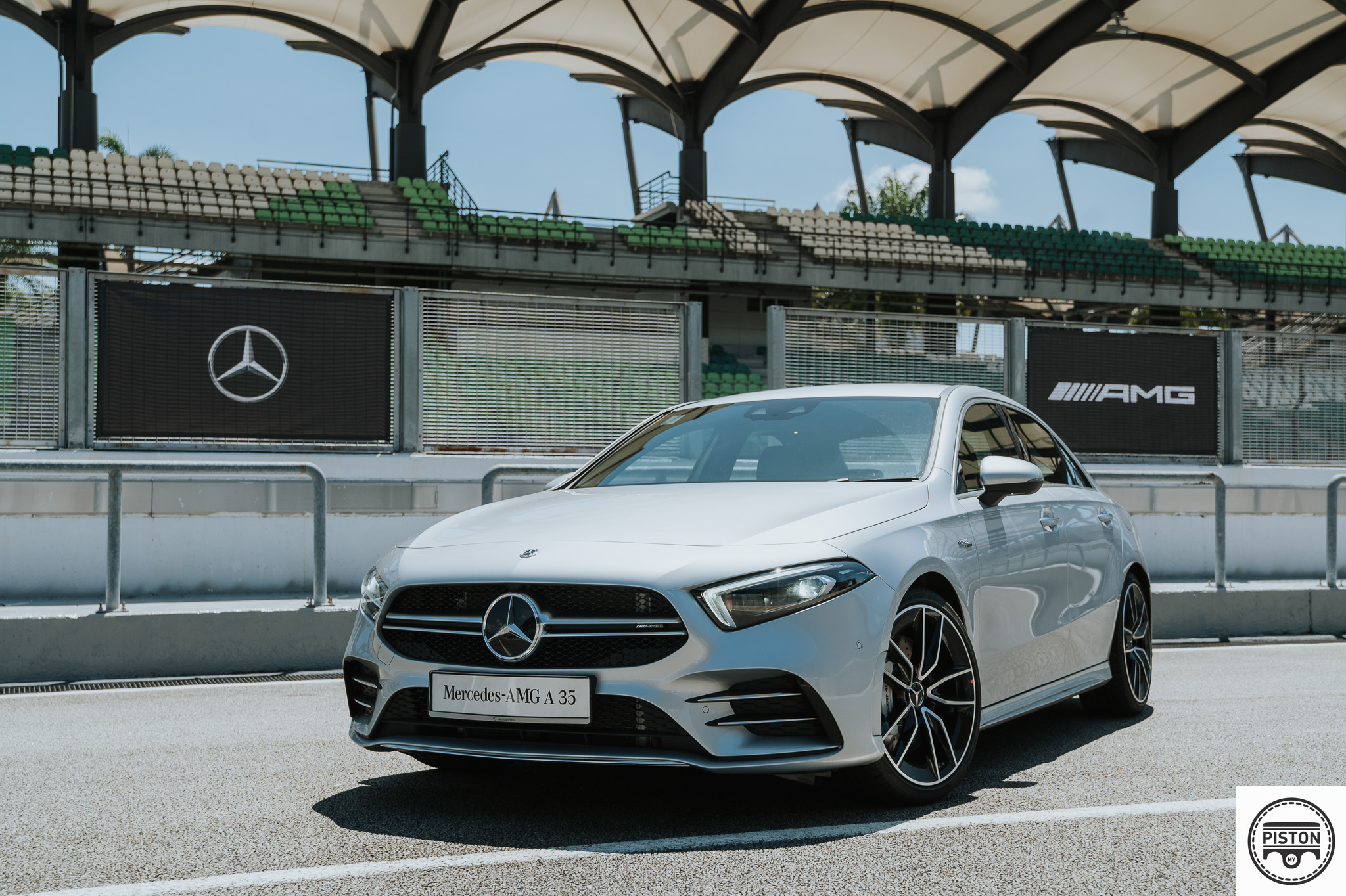
Previously, only the A 35 AMG was available in Malaysia in CBU form. The GLA 35 AMG expands the model line up and both cars are now assembled at the Mercedes-Benz plant in Pekan, Pahang.
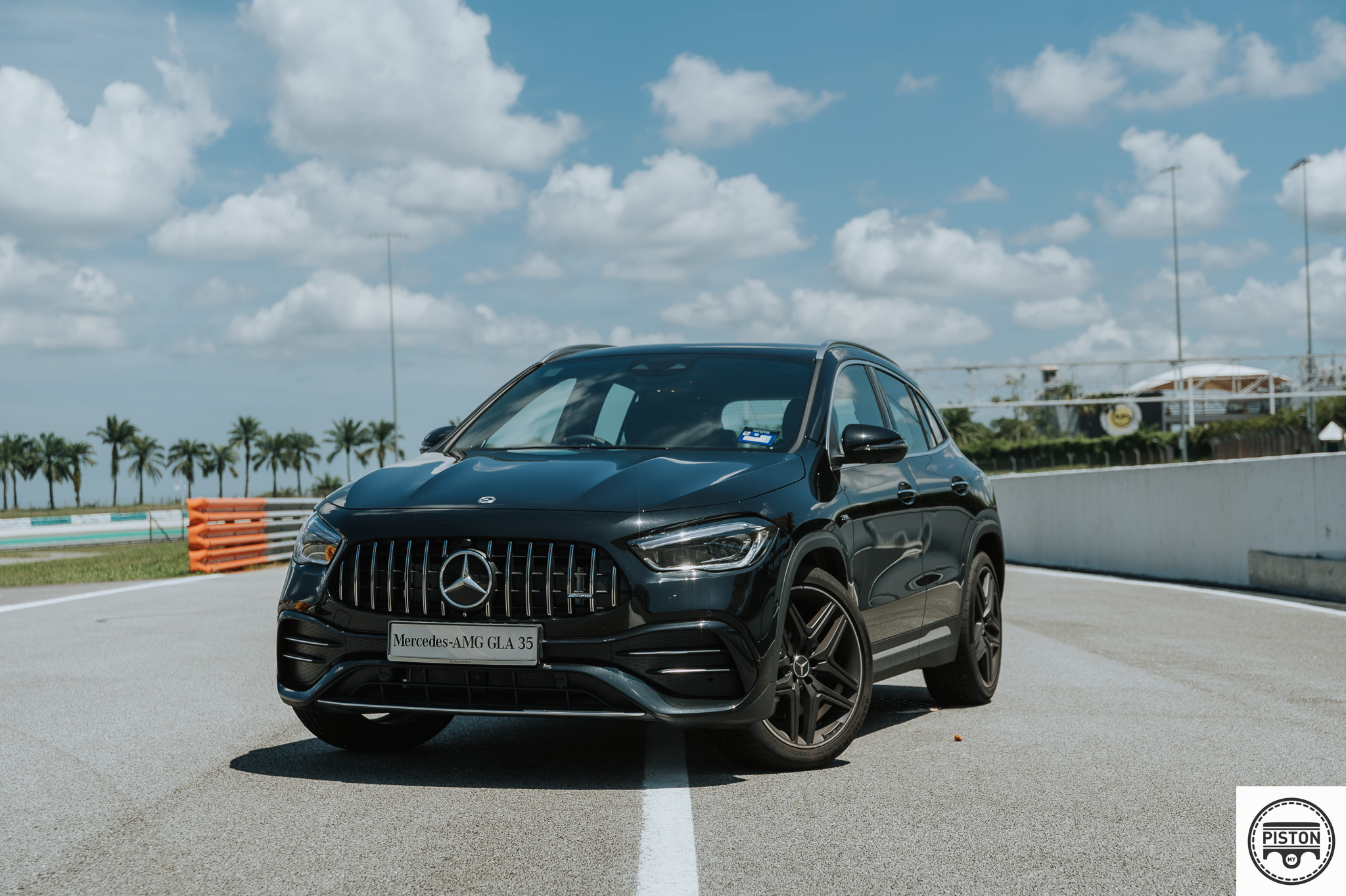
Visually the new A 35 AMG is nearly identical to the CBU model it replaces. It now runs on 19-inch AMG wheels which are nestled in wider wheel arches to accommodate the AMG wheels.
Inside, the new A 35 AMG offers an enhanced equipment range that includes a 360-degree camera, heads-up display and AMG steering buttons. There’s also a Keyless-Go comfort package, wireless charging and the MBUX interior assistant.
Other than that, the interior also comes with sports seats with electronic adjustment up front. The interior is available in optional ARTICO man-made leather or suede like DINAMICA microfibre black with AMG aluminium trimming in either black or silver.
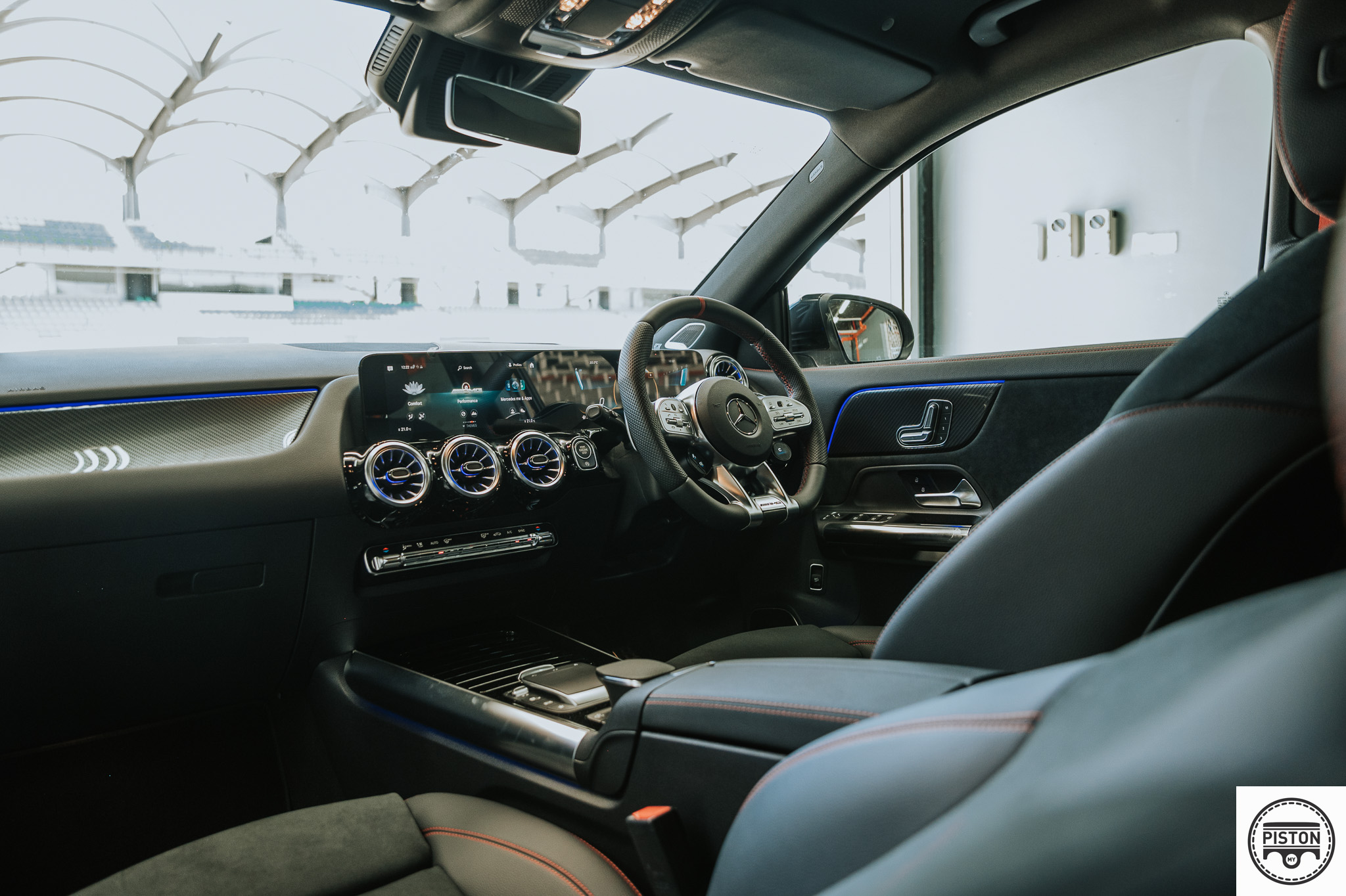
The interior of the GLA 35 AMG (shown below) is nearly identical. It features the same overall layout with the same MBUX system and offers the same leather options as the A 35 AMG but comes with carbon-fibre like trimming instead. Just like its sedan sibling, the GLA 35 AMG too offers the AMG Performance steering wheel wrapped in nappa leather.
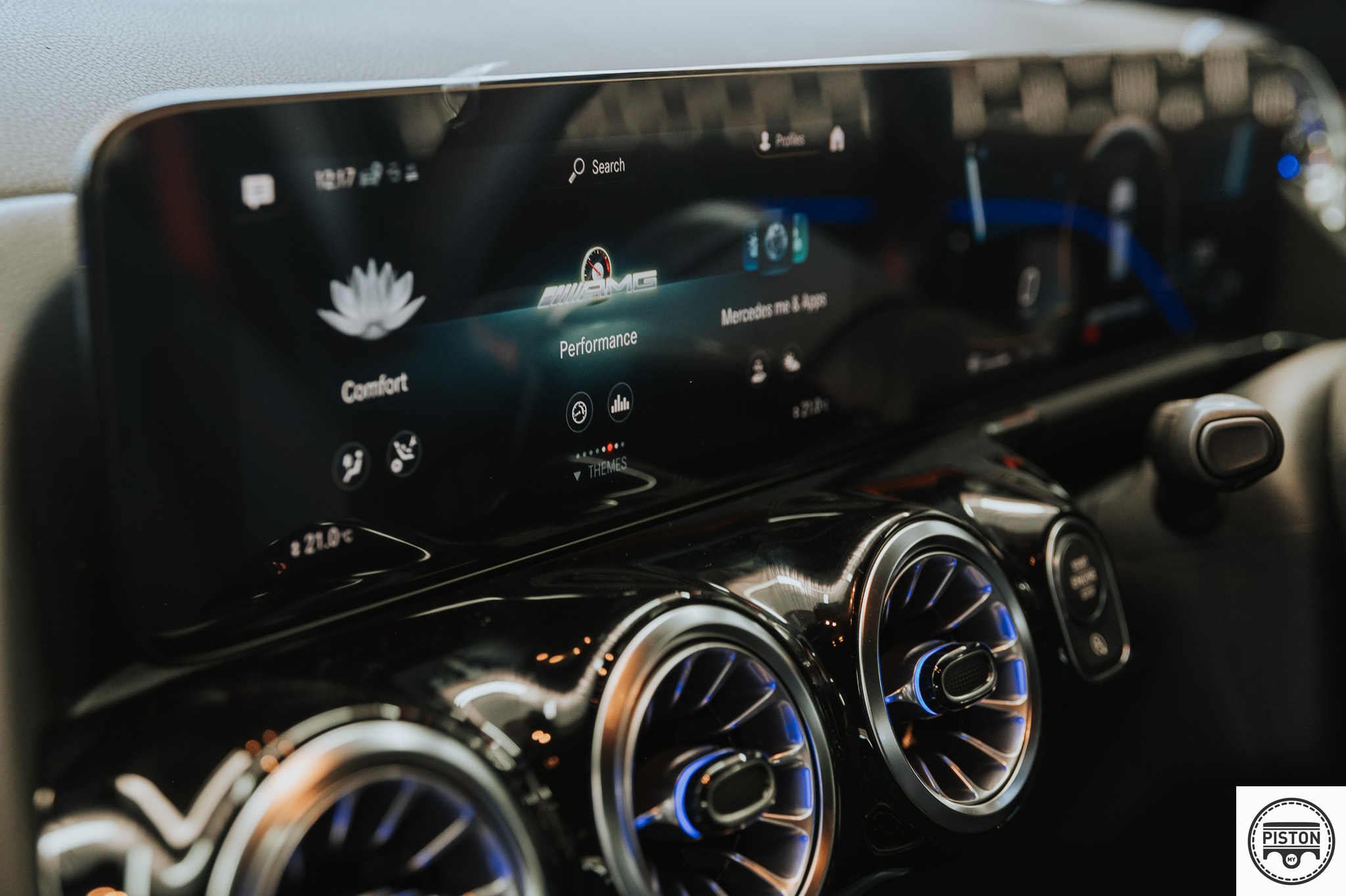
The GLA also comes with a 360-degree camera, active park assist, blind spot assist, active lane keep assist, active brake assist and Keyless Go, among others.
But the similarities end there. The GLA 35 AMG distinguishes itself by offering the light and sight package as standard that comes with 64 ambient lighting option, an auto-dimming interior mirror and driver’s exterior mirror function.
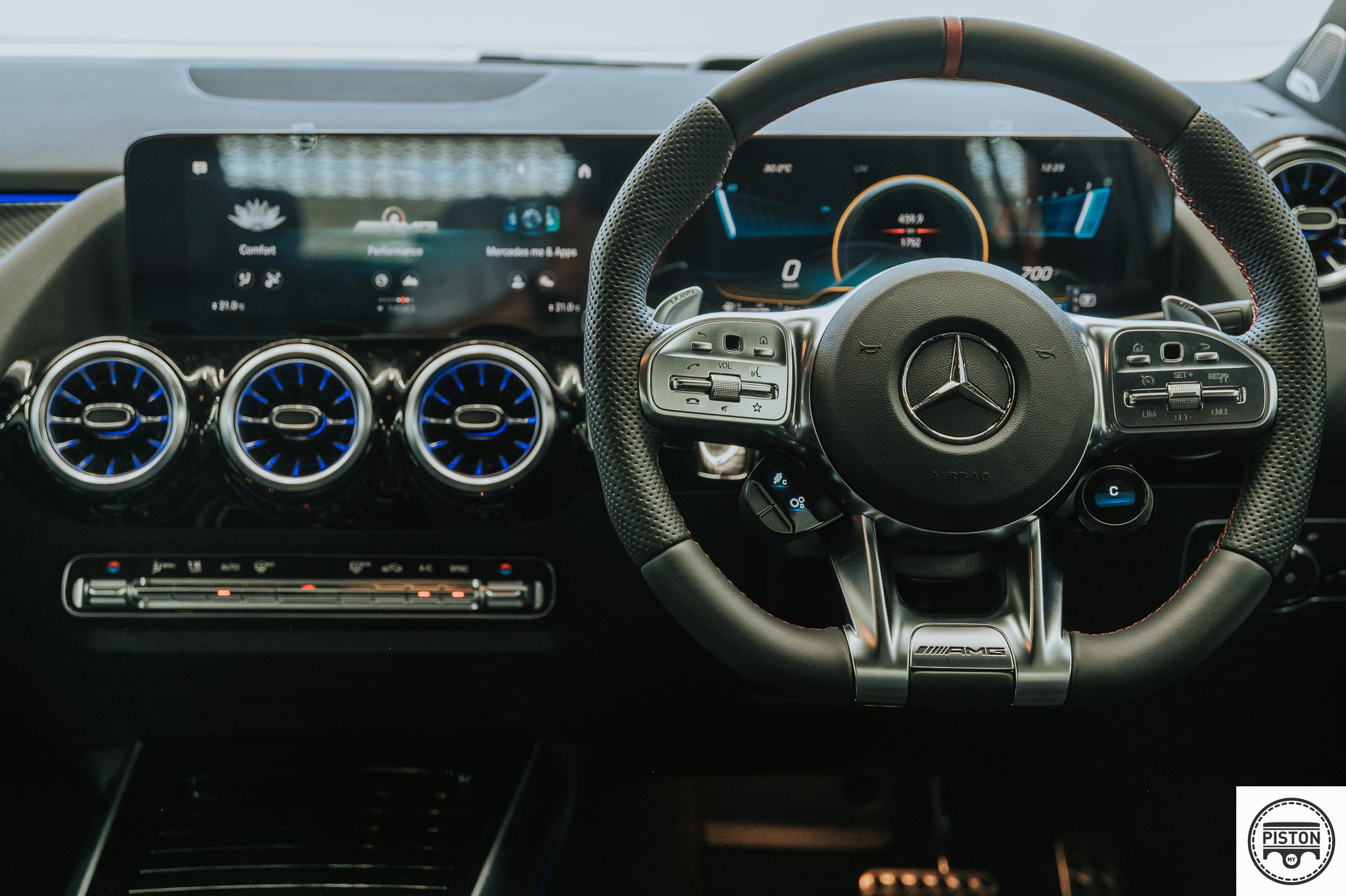
The GLA also offers the easy-pack powered tailgate and the Urban Guard vehicle protection with anti-theft alarm and interior monitoring system.
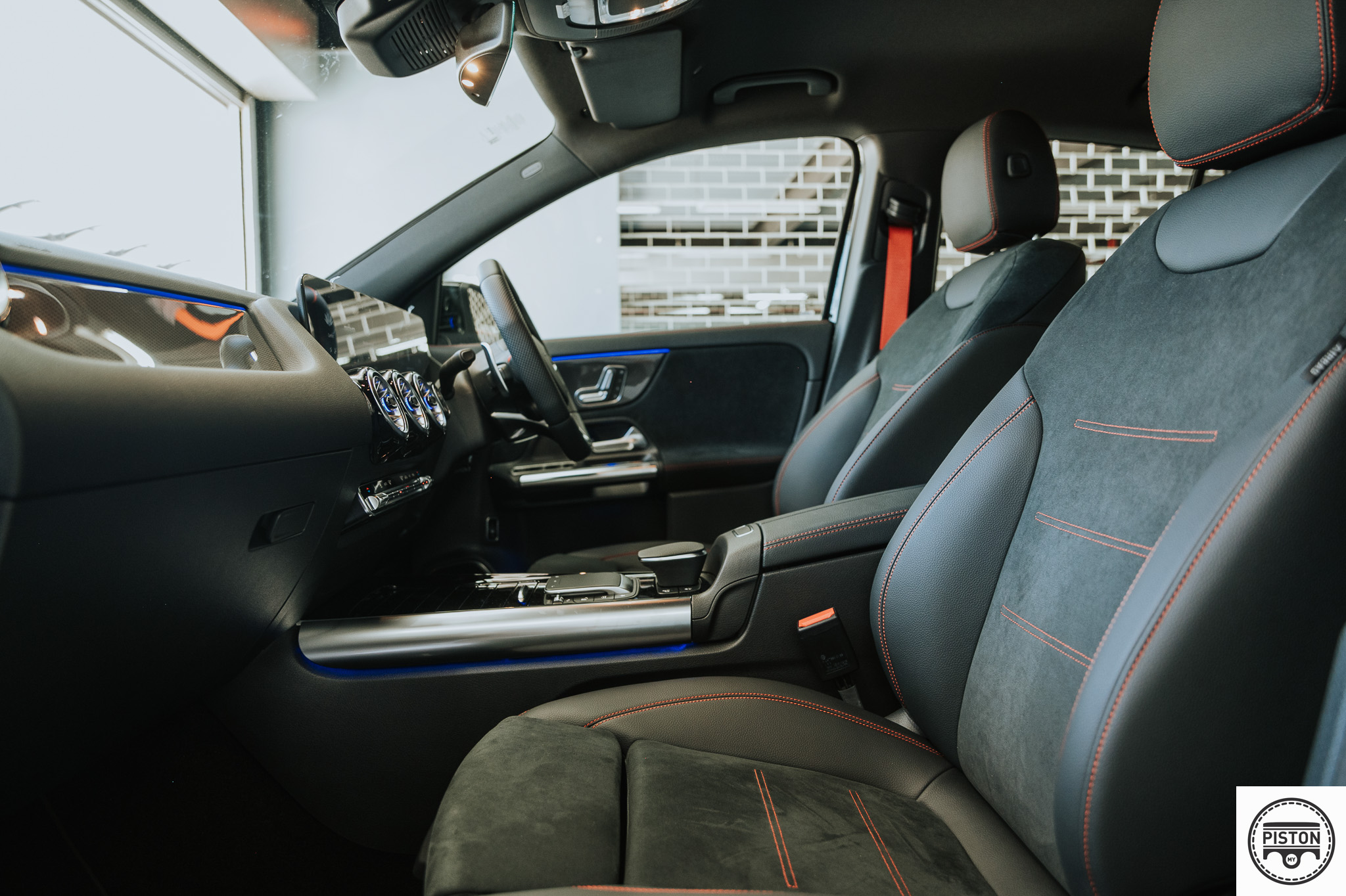
Both the A 35 and GLA 35 AMG come with the Burmester surround sound system.
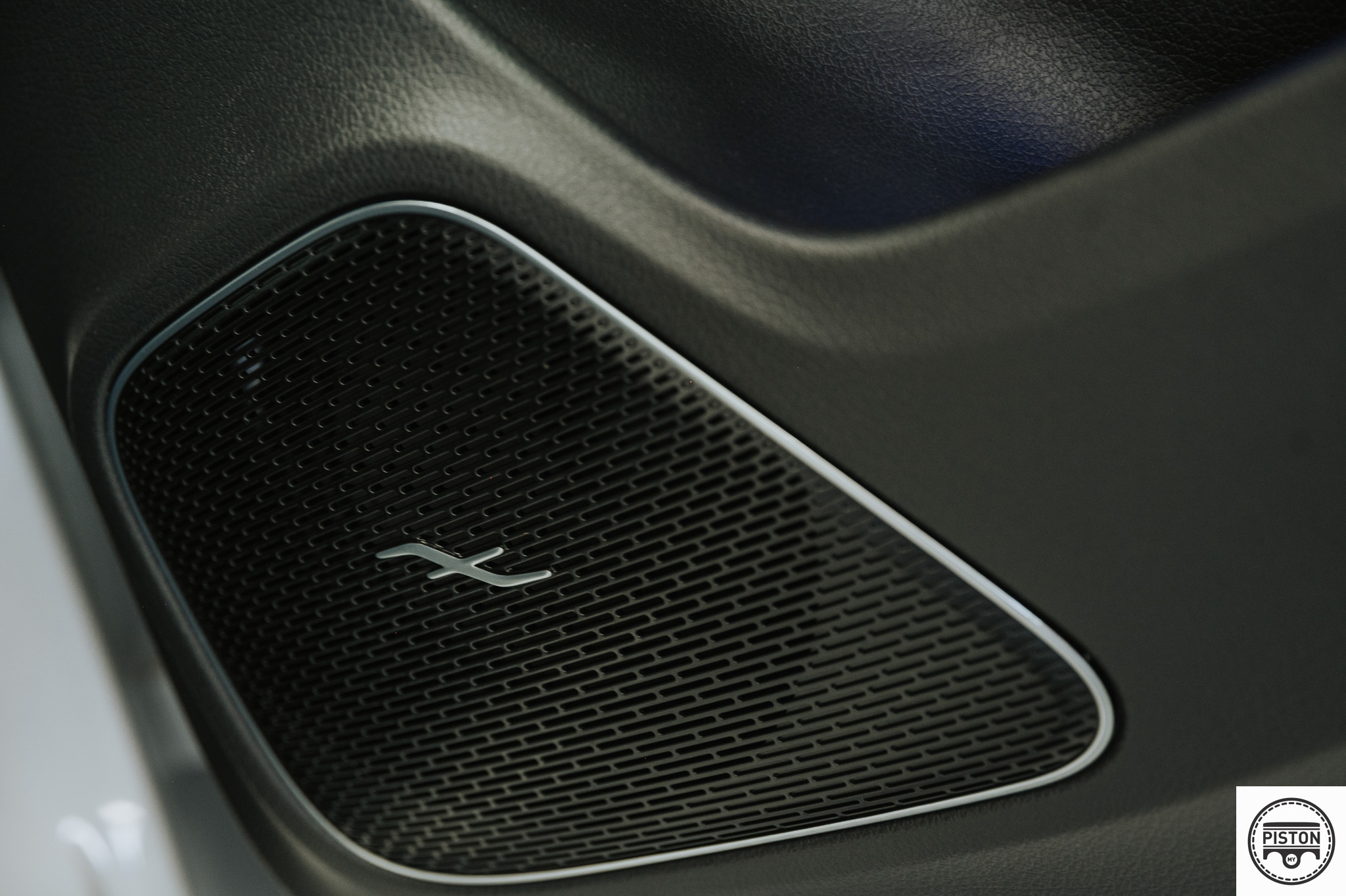
The interiors of both cars may be slightly different, but both cars are powered by the same M260 2.0-litre, four-cylinder, turbocharged engine that puts out 306hp and 400Nm of torque.
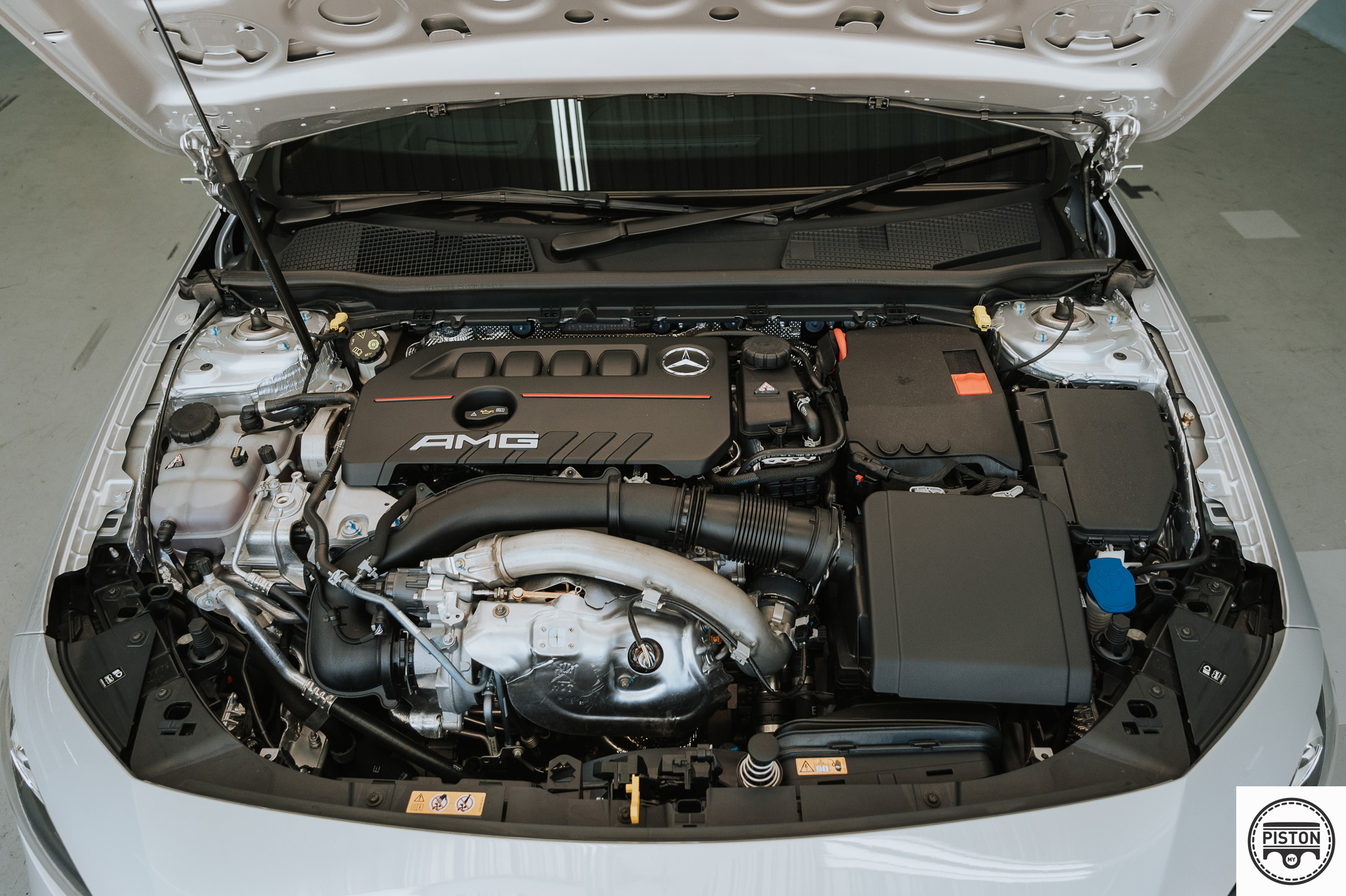
Both cars may share the same engine, but not the same gearbox. The A 35 AMG gets an AMG SpeedShift DCT 7G box while the GLA gets the AMG SpeedShift DCT 8G box.
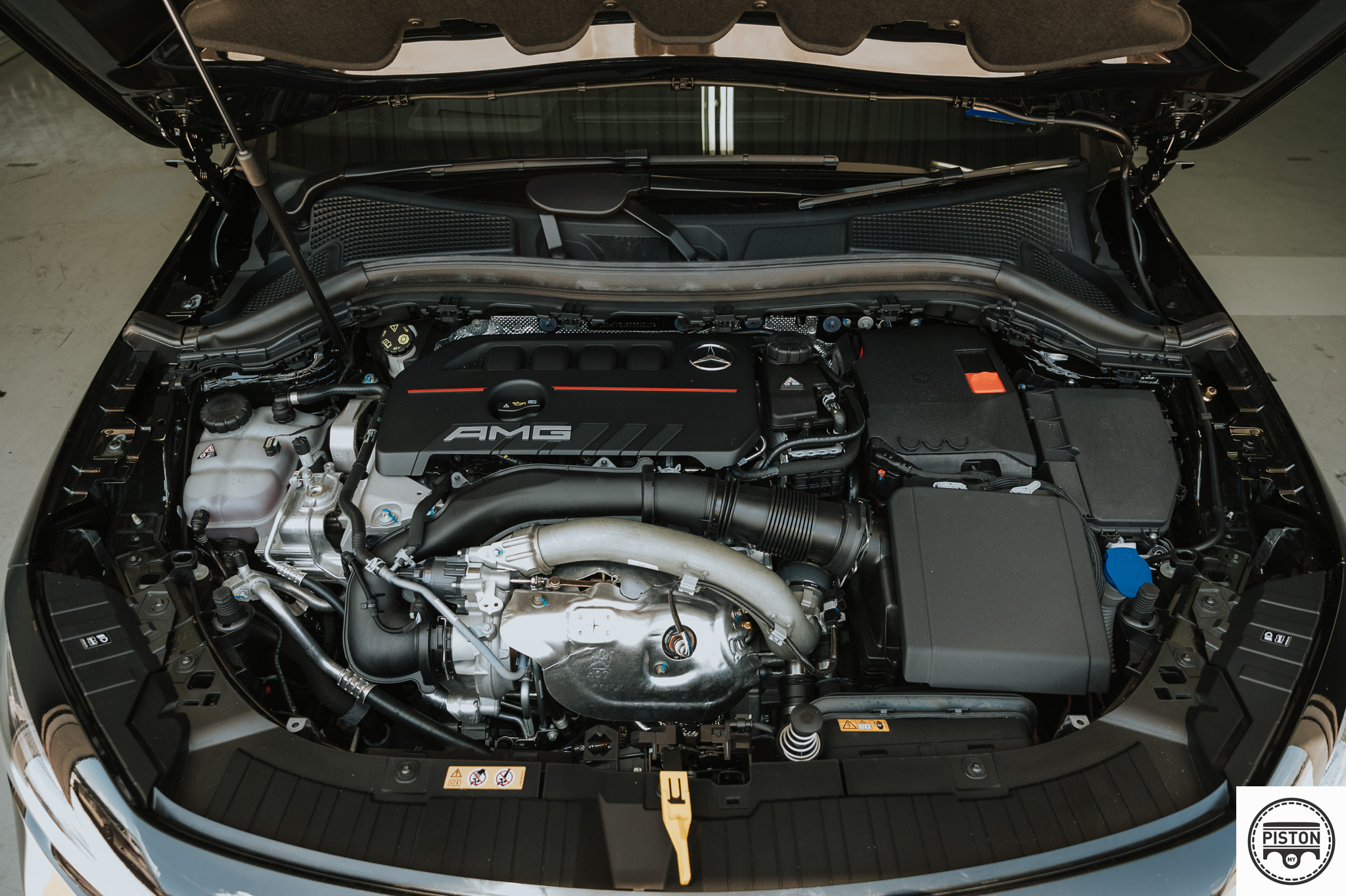
This engine though is not new either and is carried over from the previous model and is a highly tuned version of the engine found in the A250.
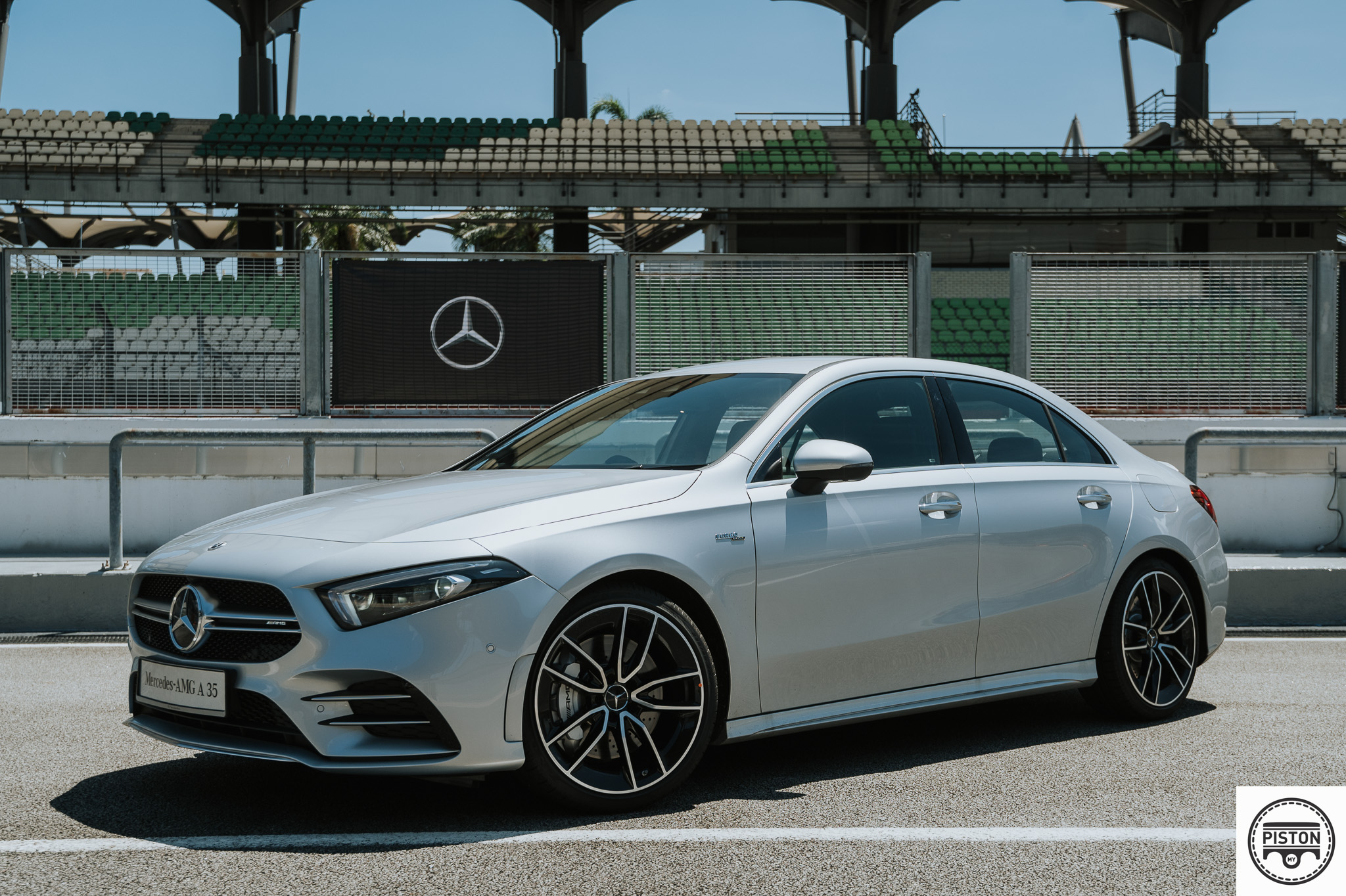
Unlike the engines found in AMG models like the A 45S and above, the engine in the A 35 and GLA 35 is not put together by a single person, which is an integral part of the AMG ‘one man, one engine’ ethos.
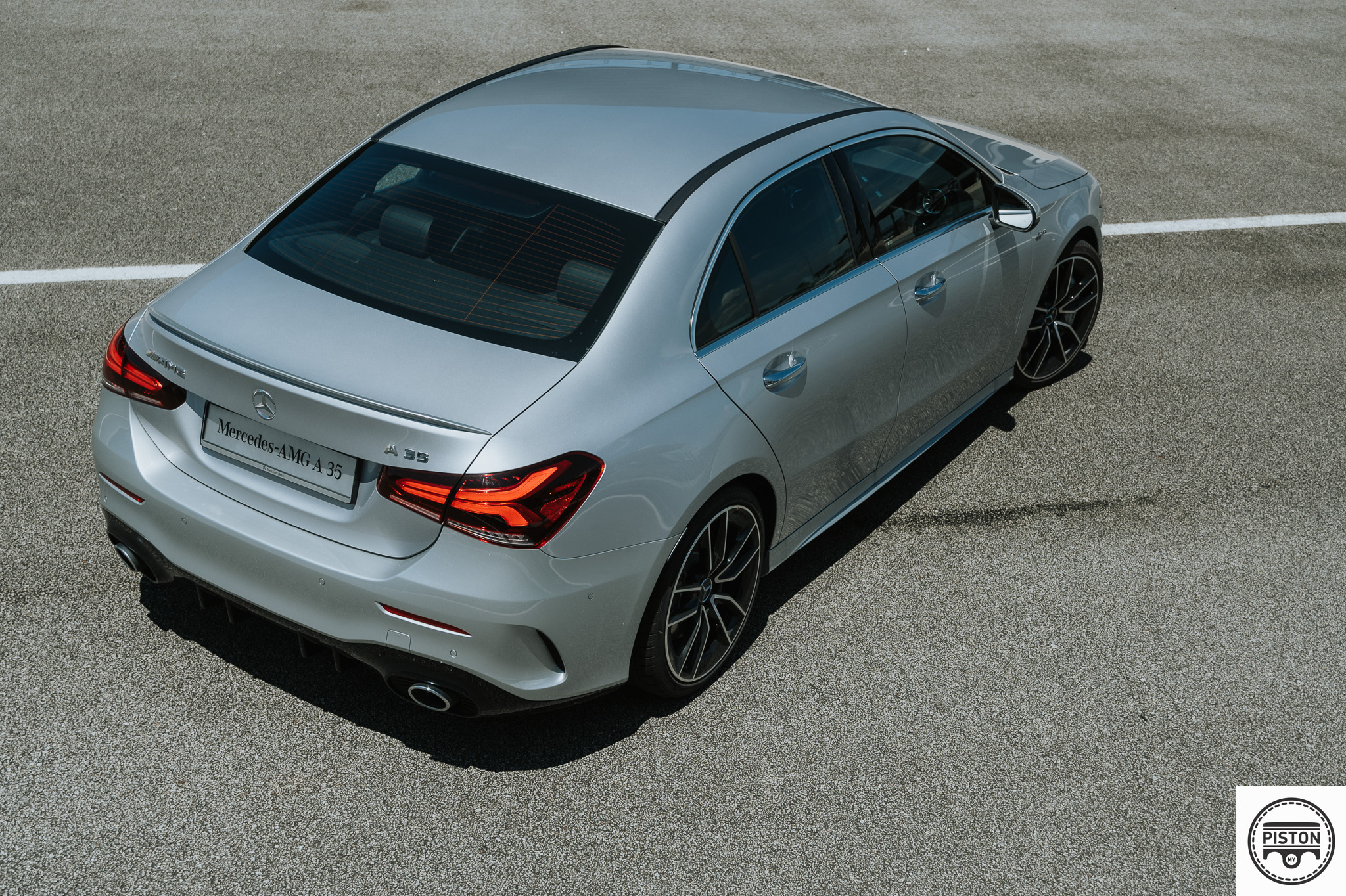
But that is not to say that the cars are not proper AMGs.
As part of the launch, we were given three laps of the north track of the Sepang Circuit in both cars.
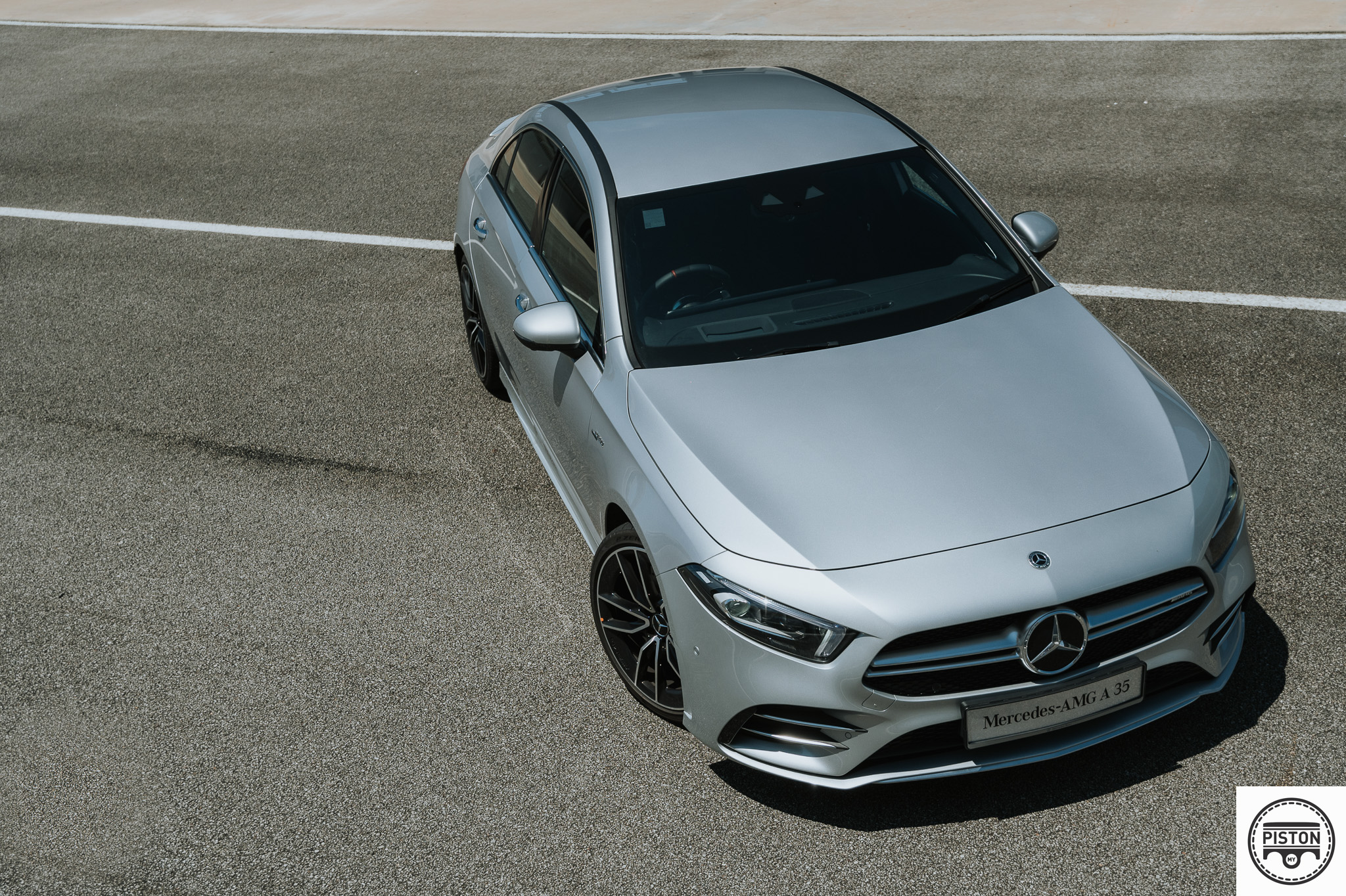
Both cars felt eager and responded to the tiniest of throttle input, which gave it a very edgy character.
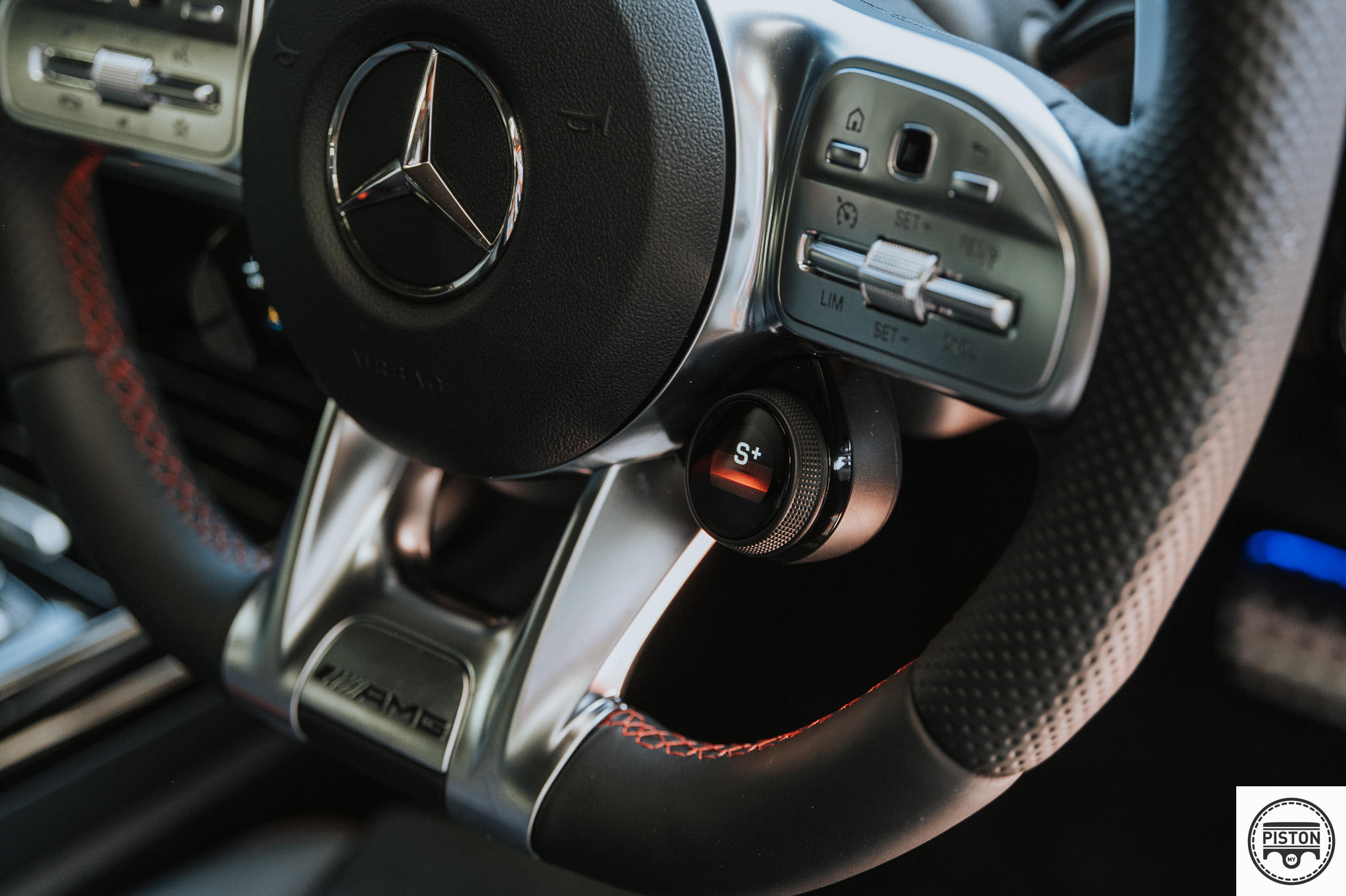
We started and ended the drive in the Sport Plus driving mode. There are four driving modes on offer with Sport Plus being the most extreme with all systems on full alert.
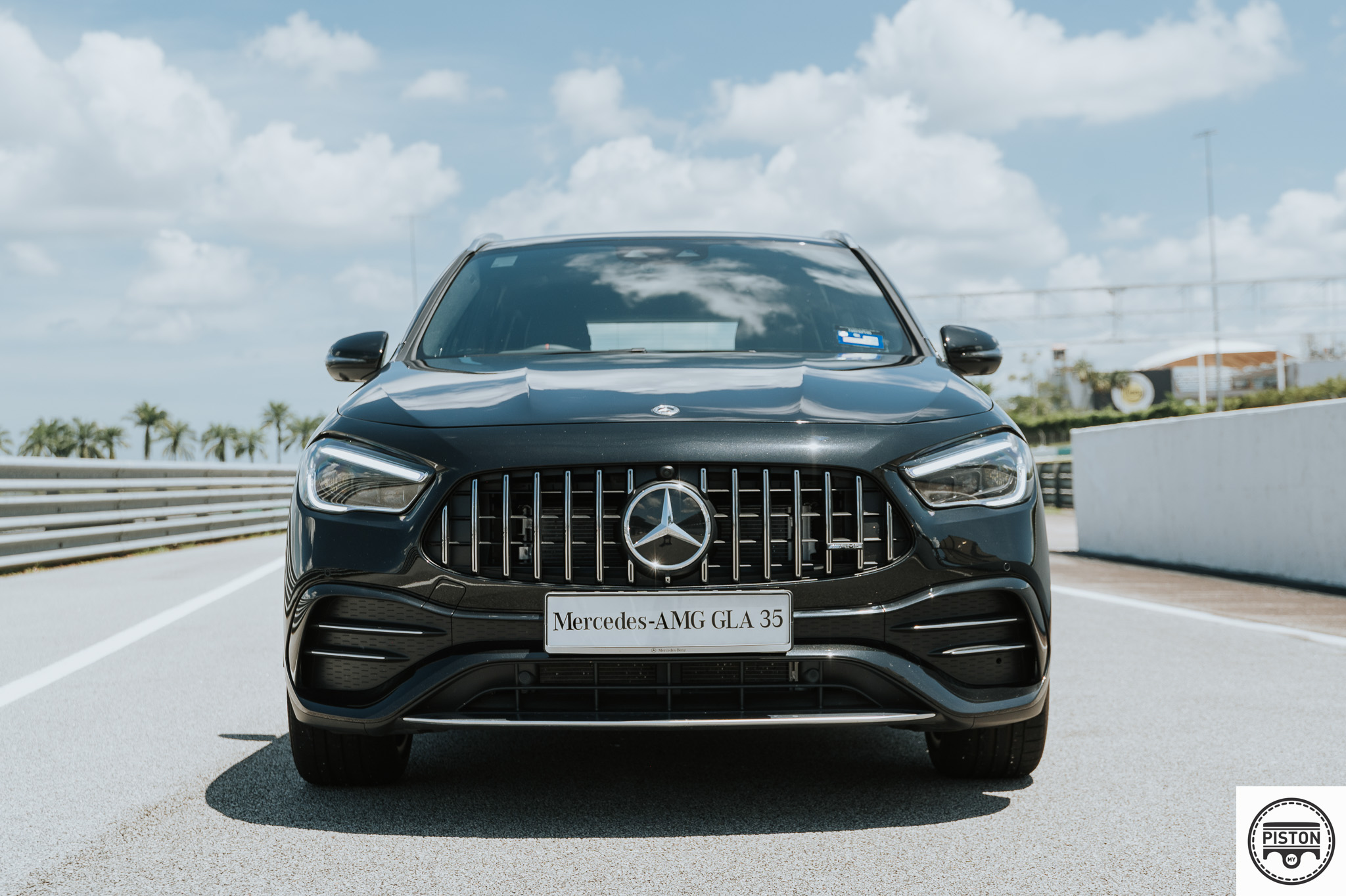
Despite both cars coming with AMG Ride Control suspension, the GLA had noticeable body roll around the tighter corners of Sepang.
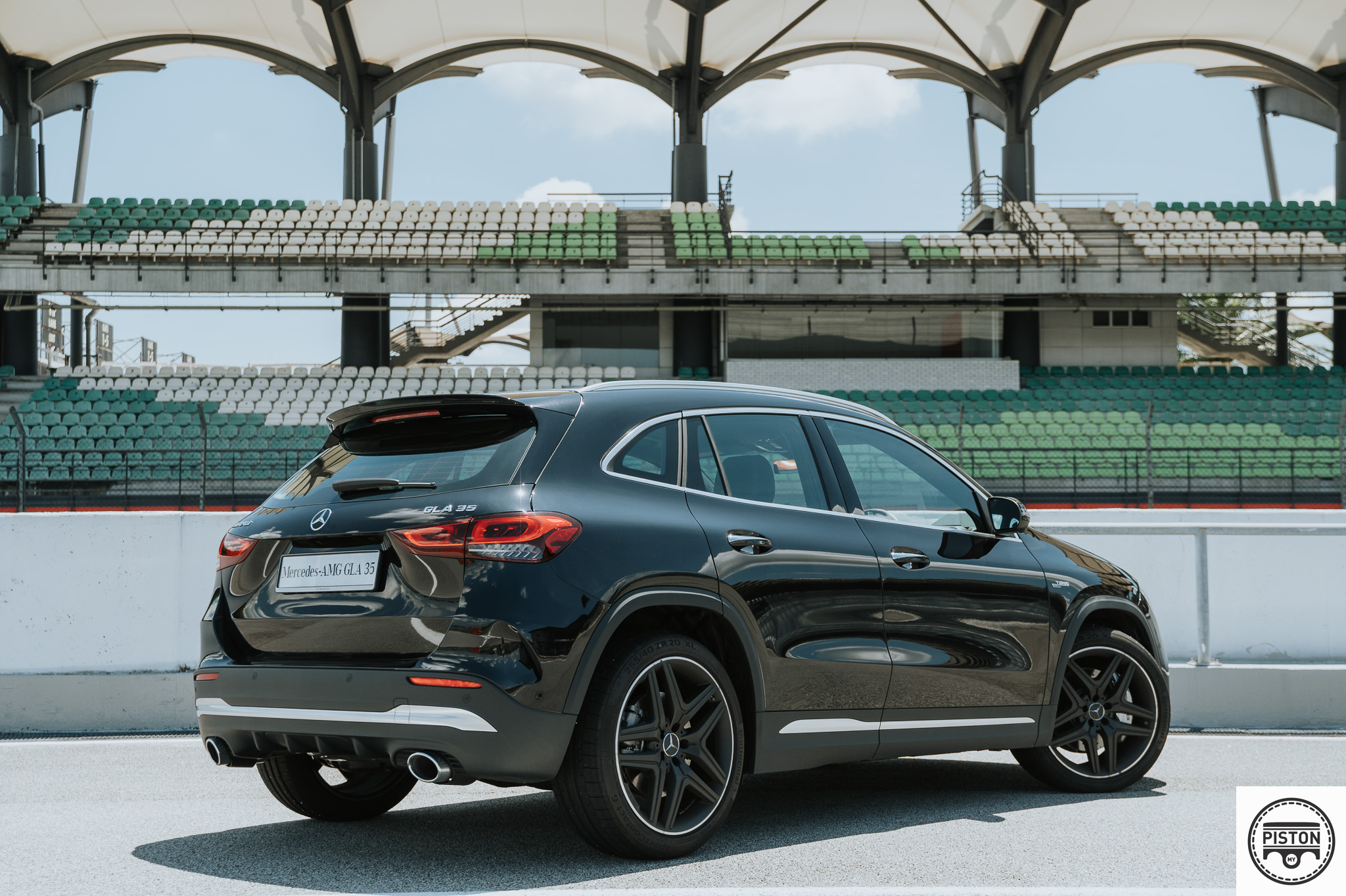
This is quite understandable because the GLA has a taller ride height and as such will tend to roll around a lot more than the A-Class.
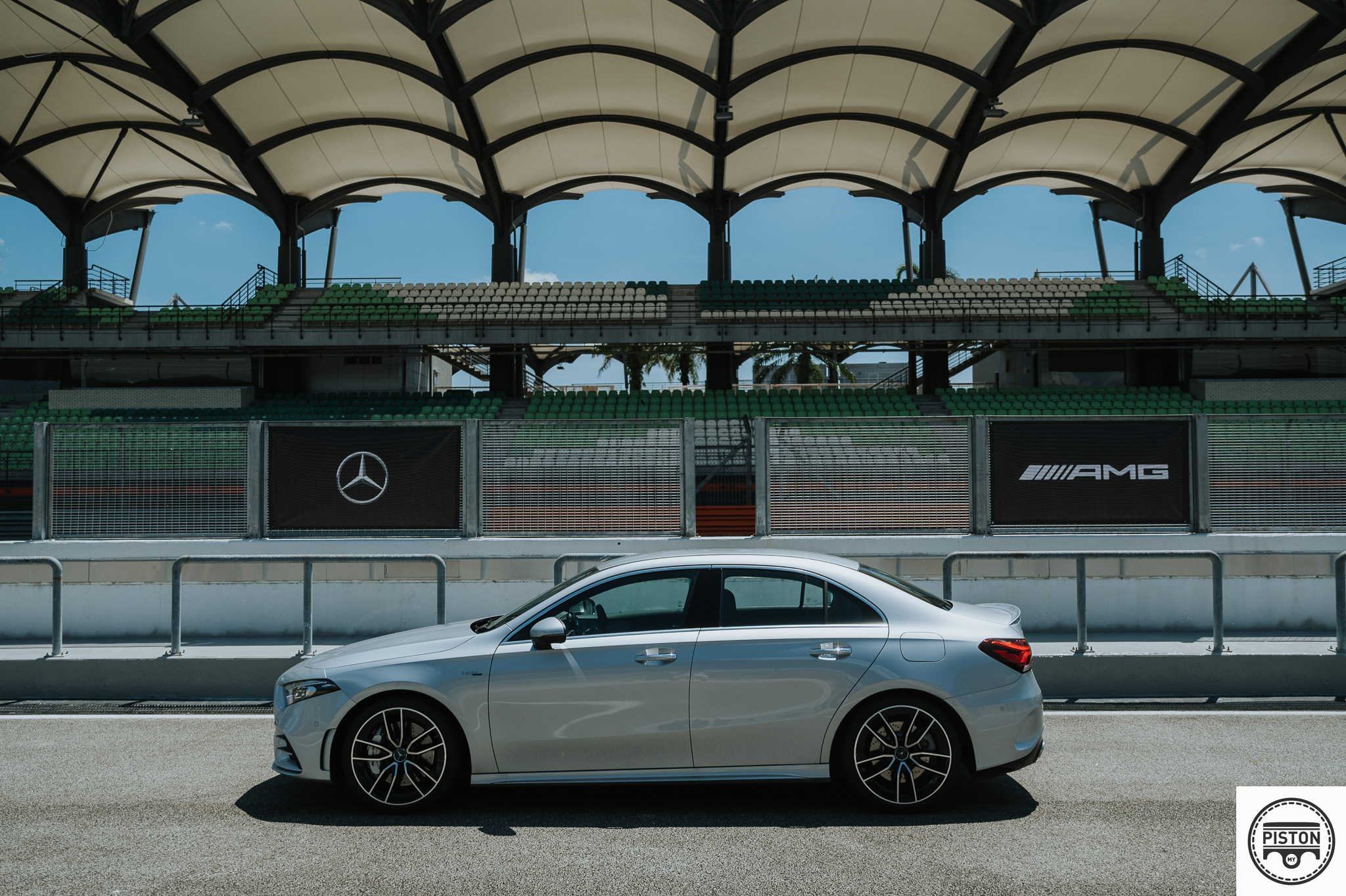
The A 35 AMG thought felt like the wilder sibling. The one that did not get the full parental supervision and as such grew up to be the brawler.
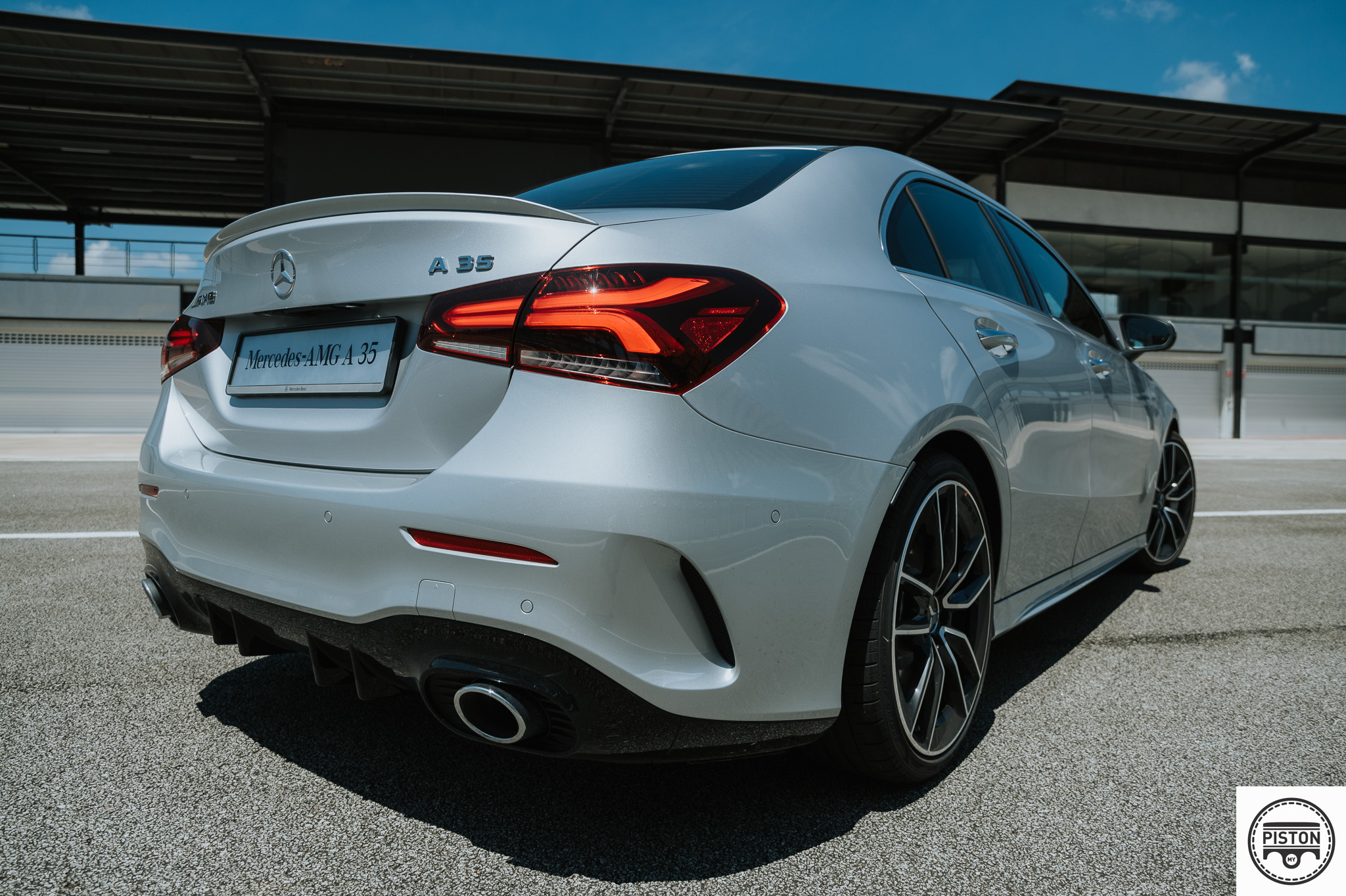
The A 35 feels like it truly benefited from the AMG Suspension. It felt more planted in fast corners, and body roll was non-existent in tighter ones.
It did feel like it had more understeer than the GLA, but at no point did it feel unmanaged. After all, both cars comes with the Mercedes-Benz 4MATIC system that sends power to the axle that needs it the most.
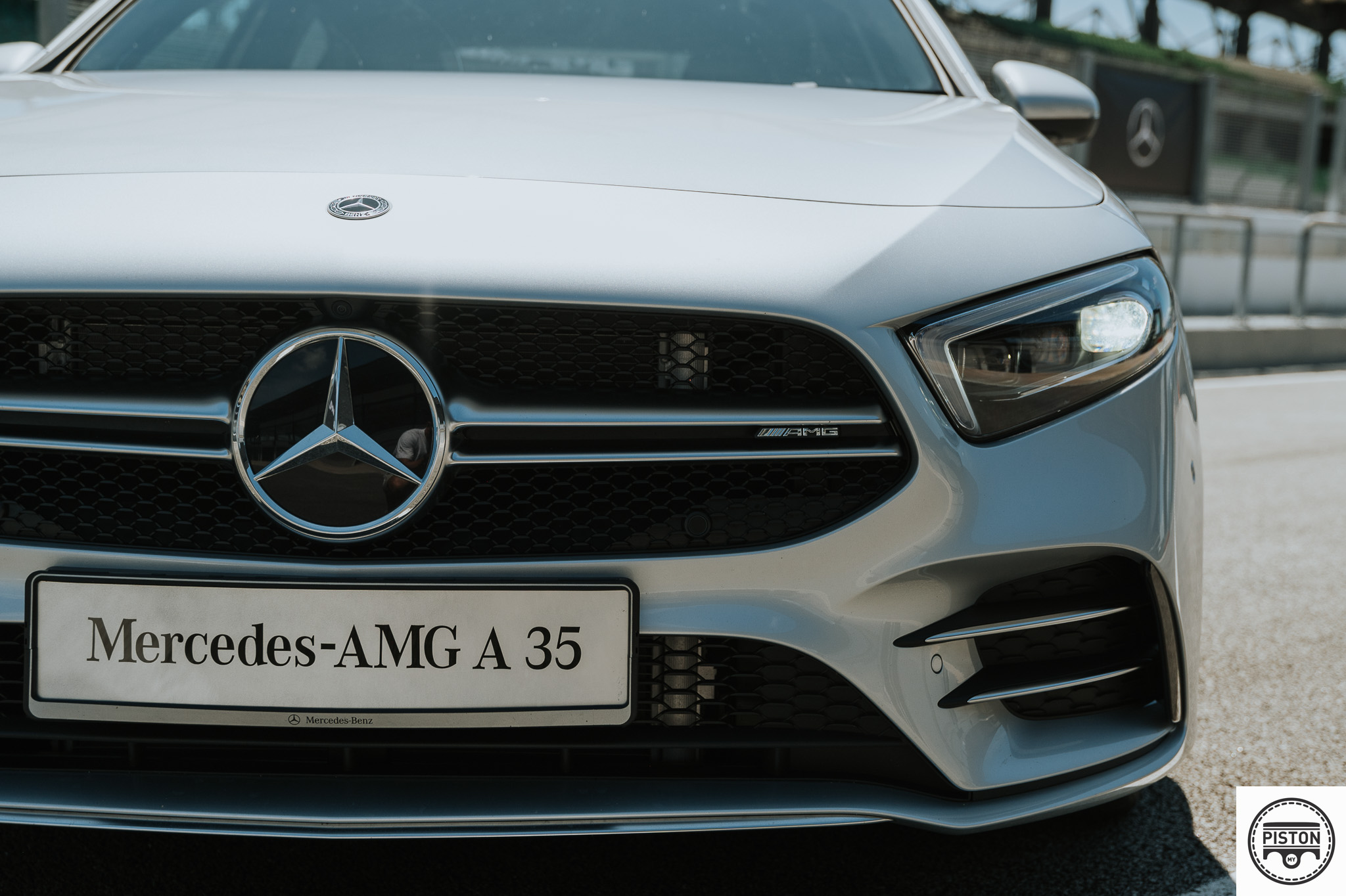
In terms of outright performance, the A 35 accelerates harder than the GLA, it does the century sprint in just 4.8 seconds while the latter does it in 5.2.
After the drive, it was clear that the GLA 35 AMG is more suited to comfort and convenience. It is a car for the family man who wants a dash of sports.
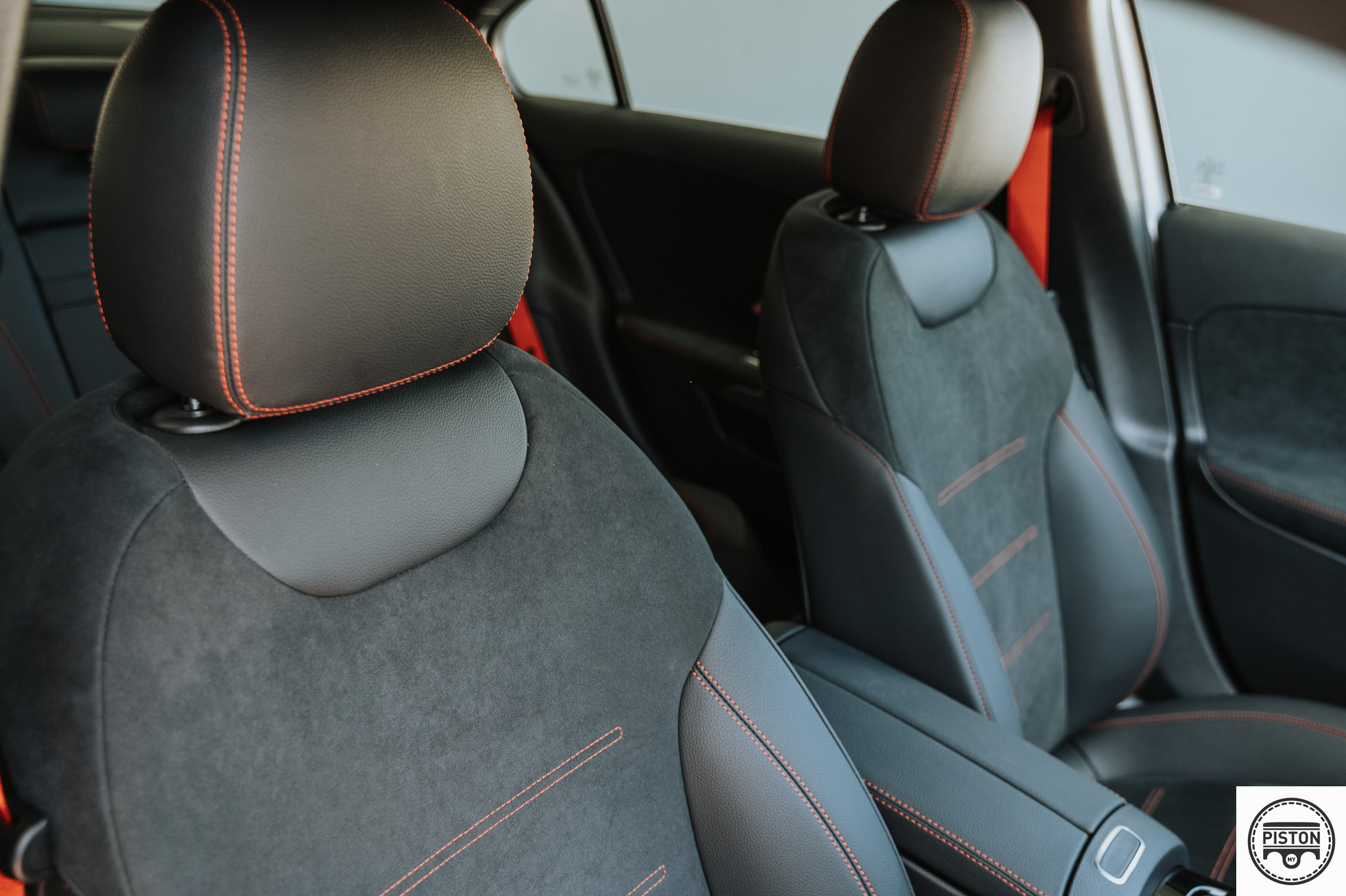
The A 35 AMG though is for the wilder ones. If you appreciate a car that rewards hard driving and corner carving, the A 35 AMG is the car for you.
Both offer well built cabins with impressive features, and there’s no louder testament that you have made it in life than a AMG badge.
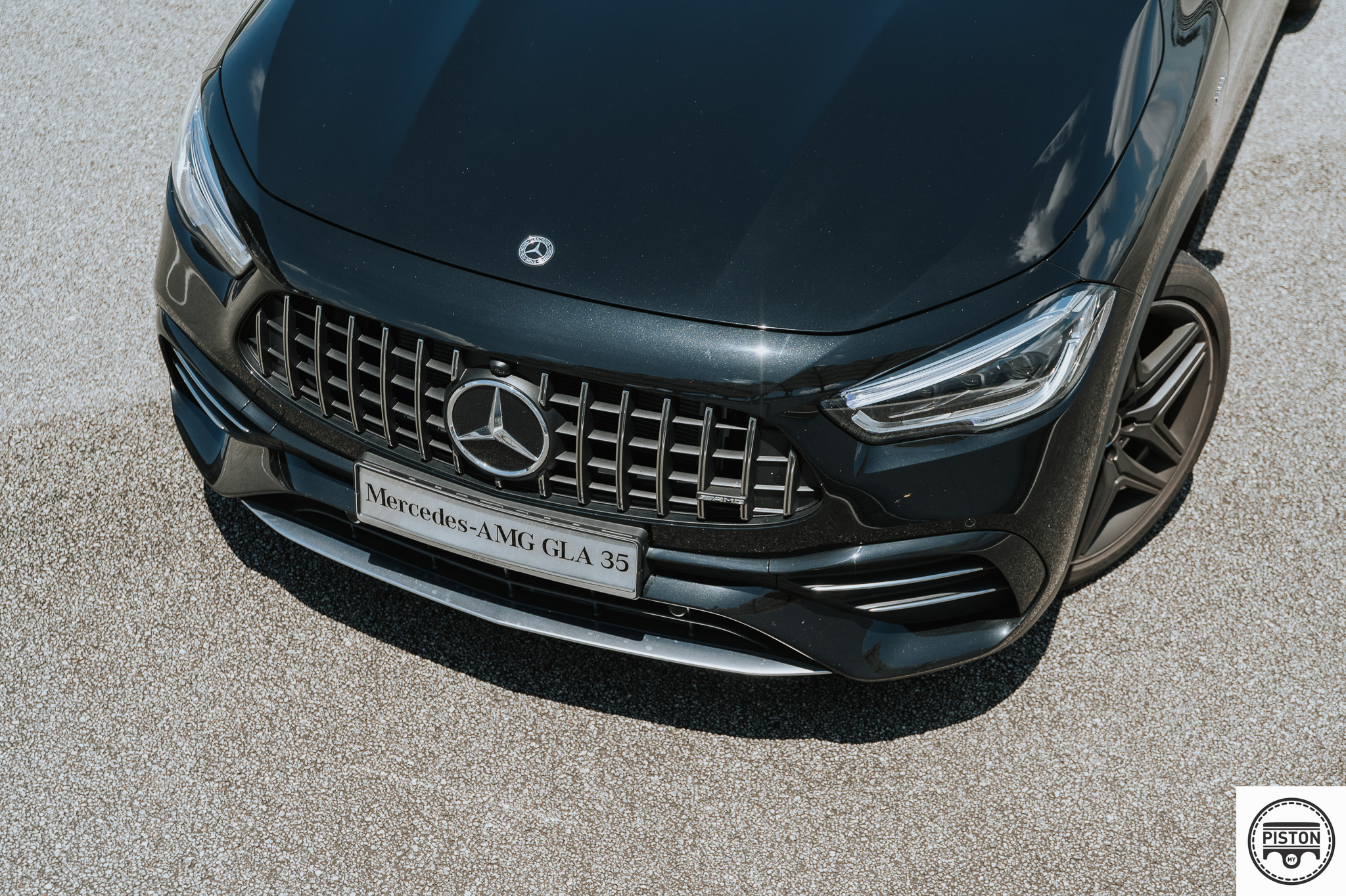
The GLA 35 AMG is now available at RM345,048.74 with SST exemption while the A 35 AMG retails at RM325,090.23 before SST.
A year ago, the Toyota GAZOO RACING team won the Safari Rally Kenya, the Japanese carmaker’s first on the gruelling African event since Yoshio Fujimoto/Arne Hertz won the 43rd Safari in 1995 in a Toyota Celica Turbo 4WD.
This year, doing even better than the 1-2 finish in the 2021 event, TOYOTA GAZOO Racing made a remarkable clean sweep of the top 4 positions with the GR YARIS Rally1 car. Elfyn Evans and Takamoto Katsuta joined winner Kalle Rovanpera on the podium, with Sebastien Ogier (last year‘s winner) in fourth. The next best-placed car finished 8½ minutes behind the Toyota quartet.
It was also a landmark 10th victory for Toyota on the famous African event, and the first time it has achieved a 1-2-3-4 finish in the WRC since the very same rally in 1993. Only once has any other manufacturer achieved the same feat in the championship in nearly three decades since.
In its second running since returning to the WRC calendar last year, the Safari delivered even tougher conditions, including deep ‘fesh-fesh’ sand on Friday and wet and muddy surfaces on Saturday in addition to the ever-present rocks and stones. It was by far the hardest challenge yet for the new generation of hybrid-powered Rally1 cars.
Rovanpera had an early scare when he ran wide on the very first corner on Thursday’s opening super special in Nairobi and knocked a tyre off its rim. But he and co-driver Jonne Halttunen ran faultlessly thereafter on the way to their fourth victory in 6 rounds, increasing their championship lead to 65 points.
Rovanpera actually never expected to win this rally. He arrived in Kenya with a commanding points lead and played down his glory hopes, instead starting with the mindset that any points from the championship’s roughest encounter would be a bonus. And despite feeling unwell, he strengthened his position on Saturday and thrived in waterlogged conditions as downpours derailed many of his rivals’ hopes. The sizeable 40.3-second margin he carried into Sunday’s finale was extended further by another 2 fastest times and the youngster ended the tough 4-day event in the lead of the Yaris quartet.
Evans and his co-driver Scott Martin also performed superbly and ran their team-mates close for the victory, remaining within 20 seconds of the lead until the rain hit on Saturday afternoon. They finished up 52.8 seconds away as they scored their second podium of the season.
Ogier, the 2021 event winner, led for most of Friday in the defence of his crown until he had to stop and change a tyre on the day’s final stage, losing over 2 minutes. He and co-driver Benjamin Veillas fought back to fourth overall and, with their team-mates focused on reaching their finish, set the third-fastest time in the rally-ending Power Stage to add to the team’s points haul from the weekend. Its Manufacturers’ championship lead has increased to 62 points.
The hotly-anticipated battle with compatriot Sebastien Loeb never materialised either, as the 9-time world champion retired his M-Sport Ford Puma with engine problems on Friday. Nevertheless, Ogier was able to bring home more solid points for Toyota during his part-time campaign.
Hyundai Motorsport’s Thierry Neuville was over 10 minutes behind in fifth overall, despite incurring a 10-minute penalty when he crashed into a tree and failed to finish Saturday’s Sleeping Warrior finale. It was a weekend to forget for the Korean manufacturer, with Estonian Ott Tanak’s i20 N also sidelined by a broken propshaft on the penultimate leg and retiring for a second time with power steering failure on Sunday.
Craig Breen restarted after his early bath on Friday and ended as M-Sport Ford’s leading driver in sixth overall despite nursing suspension problems. Breen gained a position when Oliver Solberg stopped in the middle of the road with an air filter full of dust, causing the cancellation of Sunday’s opener. The young Swede eventually got going again but was plagued by a mechanical issue in the closing speed tests and dropped to 10th.
Competing in Africa for the first time, and having led from start to finish in a Skoda Fabia Rally2, Kajetan Kajetanowicz won the WRC2 class by the massive margin and topped off a perfect weekend by scoring maximum bonus points in the rally-closing Wolf Power Stage. He leapt from fifth in the standings to lead by 5 points after six of 13 rounds.
RESULTS (TOP TEN)
1. Kalle Rovanpera/Jonne Halttunen (Toyota GR YARIS Rally1) 3:40:24.9 secs
2. Elfyn Evans/Scott Martin (Toyota GR YARIS Rally1) +52.8 secs
3. Takamoto Katsuta/Aaron Johnston (Toyota GR YARIS Rally1) +1 min 42.7 secs
4. Sebastien Ogier/Benjamin Veillas (Toyota GR YARIS Rally1) +2 mins 10.3 secs
5. Thierry Neuville/Martijn Wydaeghe (Hyundai i20 N Rally1) +10 mins 40.9 secs
6. Craig Breen/Paul Nagle (Ford Puma Rally1) +23 mins 27.9 secs
7. Jourdan Serderidis/Frederic Miclotte (Ford Puma Rally1) +30 mins 16.5 secs
8. Sebastien Loeb/Isabelle Galmiche (Ford Puma Rally1) +32 mins 12.6 secs
9. Kajetan Kajetanowicz/Maciej Szczepaniak (Skoda Fabia Rally2 evo) +35 mins 37.6 secs
10. Oliver Solberg/Elliott Edmondson (Hyundai i20 N Rally1) +37 mins 36.6 secs
© Copyright – Piston.my 2024 Trademarks belong to their respective owners. All rights reserved